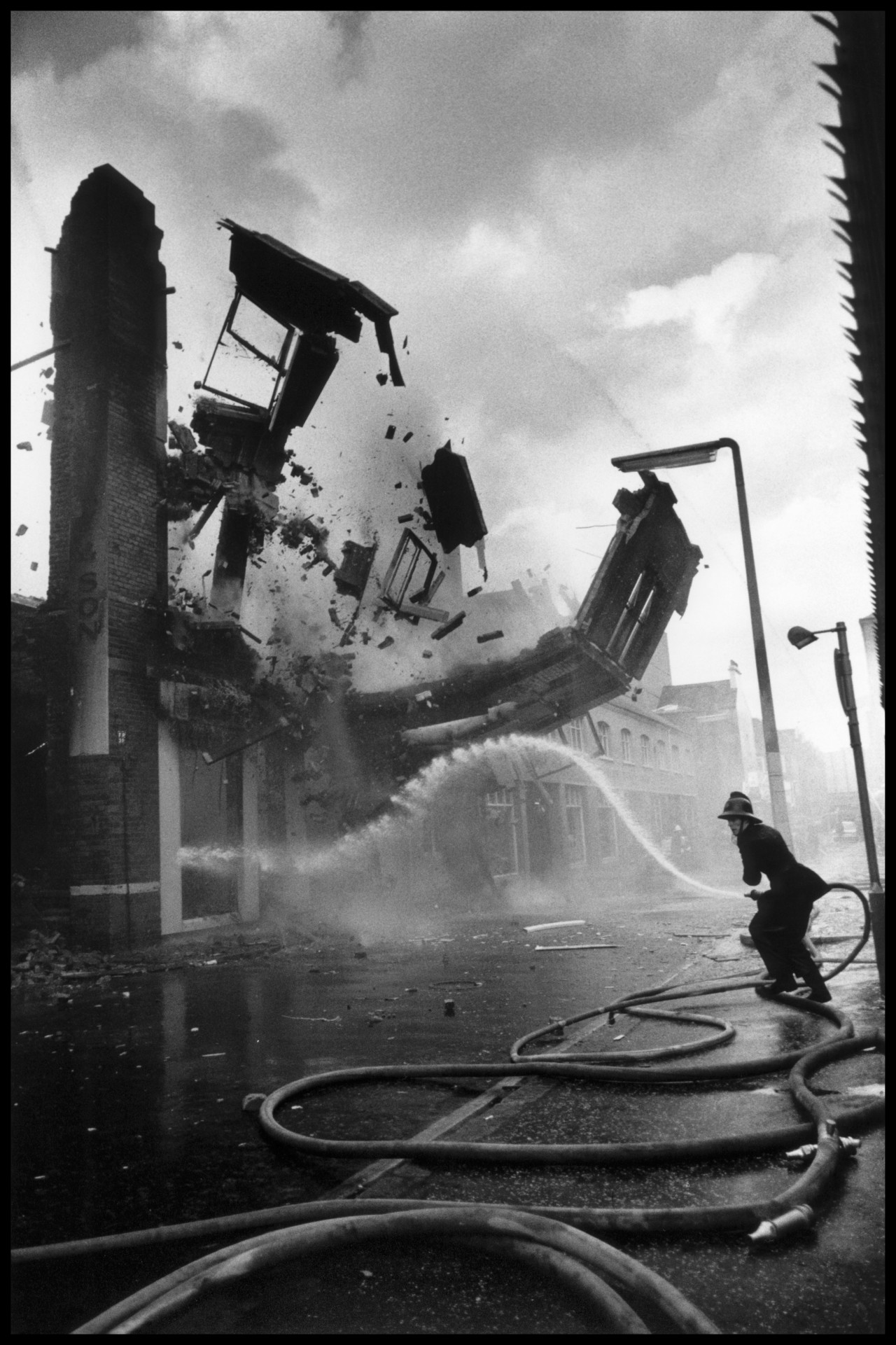Image #7: Abbas (Iranian) A wall crumbles above a firefighter after being set on fire, Belfast

When Iranian war photographer Abbas arrived in Northern Ireland he recognized a frequent pattern of people acting up for photographers. One of his first moments in the nation happened when a group of young boys asked if he would like to see them throw stones at British officers.
Abbas’ work admirably took into account more to the conflict than just the violent urban. He covered Orange meetings and culture surrounding events. This is notably something that he holds as an advantage as his identity as non-Northern Irish. He remembered asking paramilitary members and contacts if they would allow him to photograph them and were in response told no on many occasions due to their suspicion over people being informers.
One can contrast this with the experience of Crispin Rodwell, a Belfast based photographer, who installed panic buttons, a safe room, and an alarm that would warn him when a car was approaching. These precautions were made in fear of paramilitaries knowing where he and his family lived and in response to being threatened at gunpoint for his film.
This photo showcases a collapsing building after being set on fire. This depicts one method of demonstrating the destruction from The Troubles. While this is a beautifully taken photo, it fails to show the emotion or impact on the people of Northern Ireland.
Image #8: Crispin Rodwell (Northern Irish) A collection of personal effects recovered from the Omagh Bombing, Omagh, 1998

The final photo in this exhibit is perhaps the most thoughtfully composed photo in the series. The Omagh bombing in 1998 was the deadliest event during The Troubles. This photo by Crispin Rodwell shows a collection of personal effects recovered following the bombing. Despite including no particular person, the photo has an intense tragedy to it. Little details, such as the hair still stuck to the pair of classes, make the image feel as if it is a story happening right in this moment.
This picture draws on the 6 word poem by Ernest Hemmingway: “For sale: baby shoes, never worn.” While the picture itself does not explain the tragedy of what happened in the Omagh bombing it doesn’t spare the viewer the knowledge of something deep and painful is associated in this image.
Rodwell, like Lewis, expressed his disgust in the atrocities that the paramilitaries committed on both sides. Rodwell’s point of view, like many others, was that this conflict should never have happened. In this, the photos from the Northern Irish photographers – Rodwell, Lewis, Faith, Matchett – act as two very different and very important pieces. To the people of Northern Ireland they are reminders and expressions of the tragedies that they experienced. To the people who did not live this it is a cautionary tale of what can happen when the inner forces are ignored by outside actors.
